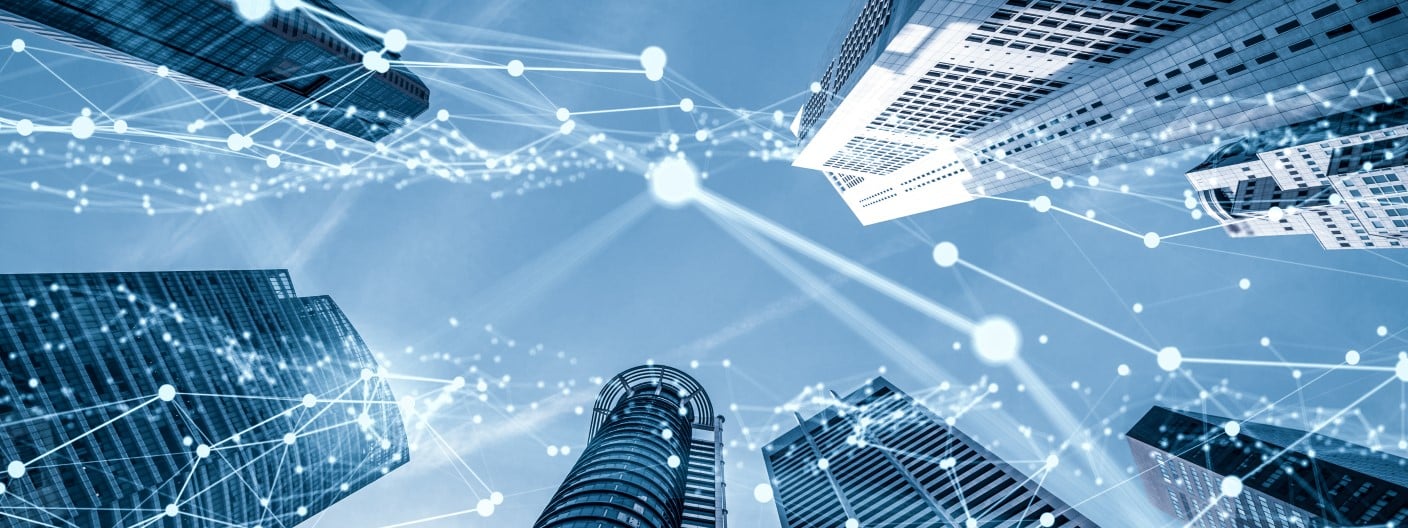Smart buildings to the rescue

What is a smart building? Is it a sustainable, energy-efficient, green and connected building? Is it a building that can respond to human-driven requirements, or a building that collects data that can be used for building services and tenants? Or is it all of the above and then maybe some more?
Today, there is an exponential increase in products connected and used in buildings, as the vast majority of data is collected and used to ensure a good indoor climate in buildings. This is when smart buildings, internet of things (IoT) and wireless communication are critical elements for sustainable buildings.
Wireless technology offers significant advantages and creates new ecosystems that bring new possibilities. Wireless technology also offers increased flexibility, installation and refurbishment, new applications and services.
Wire-free buildings are the future
What is a smart building? Is it a sustainable, energy-efficient, green and connected building? Is it a building that can respond to human-driven requirements, or a building that collects data that can be used for building services and tenants? Or is it all above? And maybe some more?
Let's look at the Edge in Amsterdam as one of the greenest buildings (and perhaps the smartest) office buildings, achieving 96 points in BREEAM and green building certifications. Over 30,000 sensors in this building are connected and accessible via smart devices by the building occupants. However, many existing buildings require renovation to become energy-efficient and healthy buildings.
Cables are our biggest enemy for energy-efficient, sustainable, green buildings
Sustainability aims to ensure that all (new and old) buildings become energy-efficient and connected, but the aspects of installing all necessary cables pose challenges.
'When wireless is perfectly applied, the whole earth will turn into a huge brain.' — Nikola Tesla, inventor and engineer, 1926
Some fascinating building cases are also using wireless technology, as well as several historical milestones from history where technology has evolved in exceeding way.
Changes will happen: first gradually — then suddenly
The exciting changes have one thing in common — technology, which means innovation is accelerating and the main question is:
Can we predict what is going to be in 10 years from now by looking 10 years back in time? The only thing we can say for sure is that the pace of technology advancements and innovation is exponentially increasing.
Today, there is an exponential increase in products connected and used in buildings, as the vast majority of data is collected and used to ensure a good indoor climate in buildings. New buildings directives and standards, such as EPBD and the goal for 2030, puts the indoor environment more into focus than before. And that is when the smart buildings, internet of things (IoT) and wireless communication are critical elements for sustainable buildings.
Challenges and potentials with going wireless
Wireless awesomeness is now here! Buildings are equipped with complete systems, ranging from different systems providing a healthy indoor climate, efficient construction processes and all types of wireless technology. However, there are still some challenges.
- Risk of interference with other networks, posing problems with connectivity solutions in future.
- Battery-powered storage and electricity grid have now some limitations and futher development is expected.
- Range (link chain to relay), security (encryption), installation and maintenance (updating).
However, wireless technology offers significant advantages and creates new ecosystems that bring new possibilities. Wireless products maybe now more expensive than cable products, but other costs (installation, maintenance, troubleshooting) are much lower compared to wireless technology. And wireless technology also offers increased flexibility, installation and refurbishment, new applications and services.
Wireless in the future
And what could happen in 10 years? More and more data will be collected in buildings, and buildings will become smarter with their use, and we need to prepare for even more exponential development of technology and prepare for managing changes and various applications in smart buildings in the foreseeable future.
'The same amount of change we experienced in the past 20,000 years, we will experience in the coming 100 years!' — Ray Kurzweil, inventor and futurist, head of Google R&D
Check out more interesting knowledge
Download the presentation about smart buildings: 'Smart buildings to the rescue' by Alexander Hellström, CEO at Lumen Radio, Gothenburg, Sweden.
And if you would like to know more about how to control the indoor climate with intelligent control systems and more, check out our pages about 'Controlling the indoor climate'.





